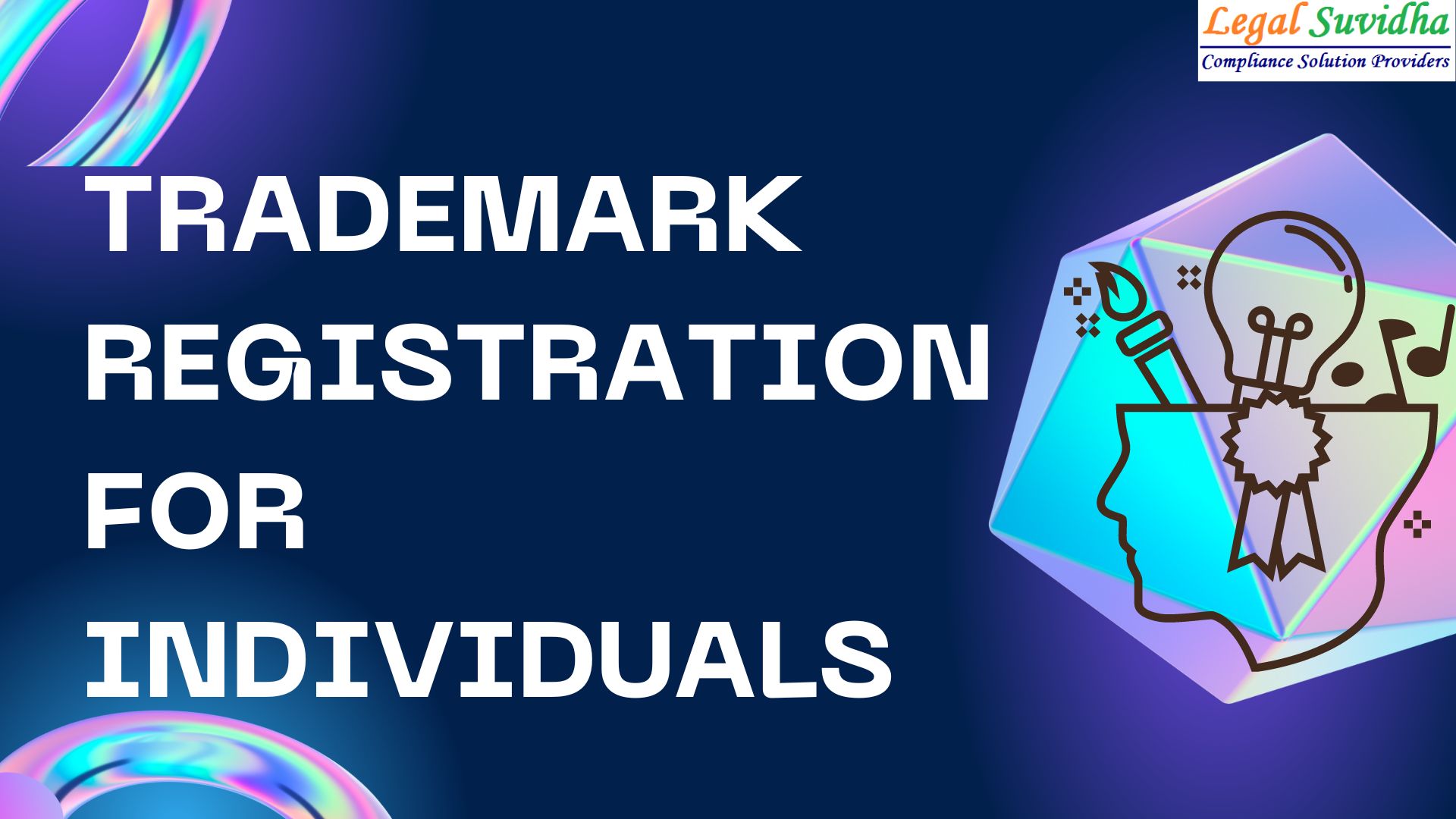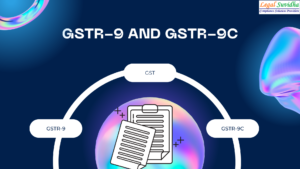HOW TO REGISTER TRADEMARK FOR AN INDIVIDUAL?
What is Trademark?
As per section 25 of the Trademarks Act, 1999 a trademark is a symbol and can be anything from a name, logo, picture, and word to even a label or a sound. Registering a trademark is the first step towards protecting your brand name. In India, trademarks are registered initially for 10 years and are due for renewal thereafter.
Once registered, a trademark can be a precious asset for a business as with a trademark, the business can project its unique positioning to the consumers. You need to keep a close watch on all the probable attempts by other businesses and individuals to register similar trademarks, even if these are related to other domains.
A trademark can be of two types.
Individual Trademark- A trademark for an individual is a type of trademark that distinguishes or uniquely identifies the services or goods of a particular company from others. The majority of the trademarks fall into this category.
Collective trademark- This type of trademark distinguishes or uniquely identifies certain common characteristics of a good or service. A collective trademark holder is not the user of the trademark himself. Rather, he supervises the authorized use of such a trademark by others. The users of a collective trademark will need to fulfill certain authorization criteria to be able to use it.
What are the benefits of Trademark Registration?
-
Protection from litigation:
Trademark registration provides you the much-needed protection against any frivolous litigation. It stops other people/businesses from dragging you into any legal tangle over the unauthorized use of the trademark.
-
Attracts the best human resources:
When you register your trademark, it spreads the vision, brand image, and unique characteristics of your organization. Naturally, talented young minds would wish to become associated with such a reputed brand.
-
Ownership rights:
The primary idea of registering a trademark is to assert the rights of the owner. Once your trademark is registered, you take an important step towards securing your rights. Upon registration, you can avail of legal protection from any infringement of rights over your brand name.
What are the documents required for Trademark registration for individuals?
The following documents are required to be submitted along with your trademark registration application-
- Proof of identity of the owner (anyone PAN card, Aadhaar Card, passport, driving license, Voter ID, ration card and so on)
- Proof of address (any one from rent/lease agreement, electricity bill, owner NOC and so on)
- In case a logo is used in the trademark, the same needs to be submitted in a black & white format.
- Proof of TM use ( for the final trademark registration)
- User affidavit
- Form TM-48 (duly signed)
What are the steps involved for Registration of Trademark?
1. Application for registration
For the registration of a trademark, an application is to be made to the Registrar. A single application can be made for the registration of a trademark for different classes of goods and services by paying a prescribed fee for each such class of goods and services.
i. Any person claiming to be the proprietor of a trademark used or proposed to be used by him, who is desirous of registering it, shall apply in writing to the Registrar in the prescribed manner for the registration of his trademark.
ii. A single application may be made for registration of a trademark for different classes of goods and services and the fee payable therefor shall be in respect of each such class of goods or services.
iii. Every application shall be filed in the office of the Trade Marks Registry within whose territorial limits the principal place of business in India of the applicant or the case of joint applicants the principal place of business in India of the applicant whose name is first mentioned in the application as having a place of business in India, is situated
Provided that where the applicant or any of the joint applicants does not carry on business in India, the application shall be filed in the office of the Trade Marks Registry within whose territorial limits the place mentioned in the address for service in India as disclosed in the application, is situated.
iv. Subject to the provisions of the Act, the Registrar may refuse the application or may accept it absolutely or subject to such amendments, modifications, conditions, or limitations, if any, as he may think fit.
v. In case of a refusal or conditional acceptance of an application, the Registrar shall record in writing the grounds for such refusal or conditional acceptance and the materials used by him in arriving at his decision
2. Withdrawal of Acceptance
Where, after the acceptance of an application for registration of a trademark but before its registration, if the Registrar is satisfied-
i. That the application has been accepted with error; or
ii. That is the circumstances of the case the trademark should not be registered or should be registered subject to conditions, limitations, conditions additional, different from the conditions, limitations subject to which the application has been accepted, The Registrar may, after hearing the applicant if he so desires, withdraw the acceptance and proceed as if the application had not been accepted.
III. Advertisement of application
This section provides for the advertisement of an application either after acceptance or before acceptance, to allow the public to oppose the registration of the mark.
After acceptance of an application for registration of a Trademark but before its registration, if the Registrar is satisfied that the application was accepted without error or that in the circumstances of the case, the trademark should not be registered or should be registered with some conditions, he may, after hearing the applicant if so desires, withdraw the acceptance and proceed with the application as if it had not been accepted.
This provision gave enough scope to the Registrar to correct any errors, he may have committed while accepting the application.
The purpose of advertisement is to allow all the interested persons to oppose the registration of trademark sought in the application, if their trade or other interests are likely to suffer, because of registration of a trademark.
Once it is advertised, it will be opened to other trademark owners and proprietors, to oppose the registration on the ground of deceptive similarity and passing off, etc.







